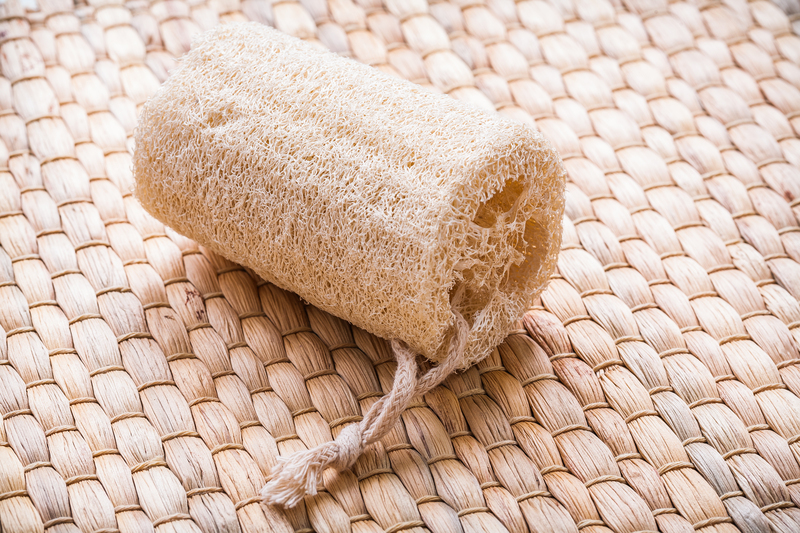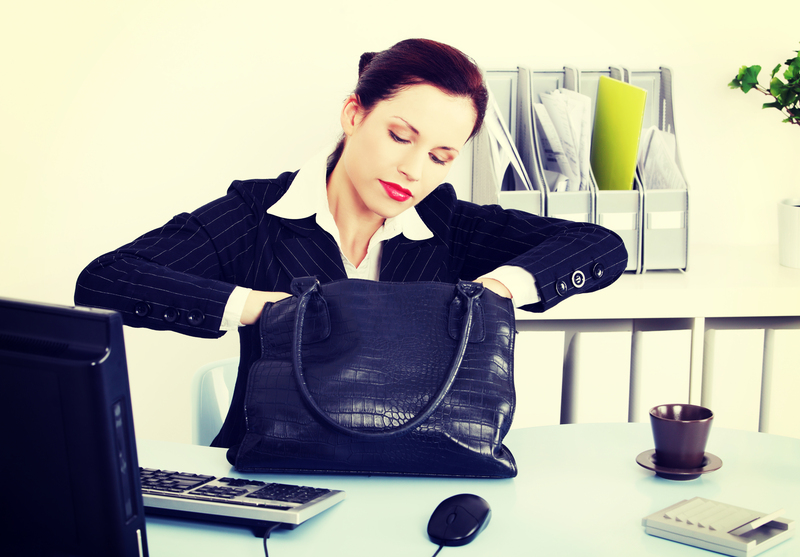Your Go-To Guide for Immaculate Carpets and Hard Floors
Posted on 31/08/2025
Your Go-To Guide for Immaculate Carpets and Hard Floors
Creating a welcoming, stylish, and healthy home starts from the ground up. Whether you have plush carpets or elegant hard flooring, maintaining their flawless appearance can feel like a challenge. This comprehensive guide provides expert tips and actionable advice for sparkling clean carpets and shining hard floors. Read on for best practices, deep-cleaning methods, recommended products, and preventative care for all your flooring needs.
Why Immaculate Flooring Matters
Your carpet and hard floor surfaces are more than just underfoot--they set the tone for every room, impact air quality, and play a pivotal role in hygiene. Clean floors:
- Enhance the appearance of your living and working spaces, making them more inviting.
- Reduce allergens, dust, and bacteria, improving respiratory health.
- Preserve the value of your property by preventing undue wear and stains.
- Contribute to safety by eliminating slippery grime and tripping hazards.
*Whether you're a homeowner, renter, or business, investing in your flooring's cleanliness pays off in comfort, aesthetics, and long-term savings.*

Understanding Carpets and Hard Floors
The Diversity of Carpet Types
Carpets come in various fibers and constructions, each with their own cleaning needs:
- Nylon carpets--durable and stain-resistant, ideal for high-traffic areas.
- Polyester carpets--soft and colorful, but more prone to oil-based stains.
- Wool carpets--luxurious and natural, but require gentle cleaning.
- Olefin carpets--moisture- and mildew-resistant, best for basements and outdoor areas.
Types of Hard Floors
From classic hardwood to trendy luxury vinyl, the flooring market offers a range of hard floor surfaces:
- Solid or engineered hardwood
- Laminate flooring
- Ceramic or porcelain tiles
- Vinyl, linoleum, and resilient floors
- Stone flooring (marble, slate, granite)
- Bamboo and cork
Each material demands tailored care to stay immaculate and structurally sound.
Daily, Weekly, and Seasonal Cleaning Strategies
Daily Maintenance for Immaculate Floors
- Sweep or vacuum high-traffic areas every day--dirt and grit can scratch hard floors and get ground into carpet fibers.
- Address spills immediately to prevent staining. Blot, don't rub on carpets; mop or wipe hard floors.
- Use entry mats inside and outside doors to minimize tracked-in debris.
Weekly Routine Cleaning
- Thoroughly vacuum carpets weekly, including beneath furniture and along baseboards.
- Dust and mop hard floors once or twice per week, using gentle, surface-appropriate cleaners.
- Shake out or wash throw rugs and runners.
Monthly and Seasonal Deep Cleans
- Move furniture and vacuum underneath to reach hidden dust and dirt on both carpet and hard floors.
- o Schedule professional deep cleaning for carpets every 6-12 months (or more with kids and pets).
- Polish or seal hardwood and stone floors annually to maintain their shine and protective barrier.
- Clean and reseal grout lines and porous tile surfaces.
Expert Tips for Spotless Carpets
1. The Right Vacuum for the Job
Select a vacuum with adjustable height for different pile levels and strong suction. For allergies, opt for models with HEPA filters. Don't forget regular maintenance: empty dustbins, clean rollers, and replace filters for optimum efficiency.
2. Effective Spot Cleaning Techniques
- For liquid spills, *blot* with a clean, dry cloth--never rub, as this can set the stain and damage fibers.
- Apply a small amount of water or club soda, then blot again.
- Use a carpet-appropriate stain remover for persistent marks, following the manufacturer's instructions.
- Always test cleaning solutions in an inconspicuous area first.
3. Dealing with Odors
- Sprinkle baking soda generously, let it sit for 15-30 minutes, then vacuum.
- Consider vinegar sprays (diluted with water) for natural deodorizing.
4. Preventing Wear Patterns
- Rotate furniture and area rugs every six months to distribute wear.
- Use carpet protectors under heavy furnishings to prevent crushing fibers.
- Encourage family to remove shoes indoors to reduce tracked-in grit.
5. Professional Carpet Maintenance
Professional carpet cleaning services extend your carpet's life. Deep extraction, steam cleaning, or dry cleaning can revitalize appearance and hygiene, especially for stubborn stains and allergens.
Best Practices for Shimmering Hard Floors
1. Cleaning Hardwood Floors
- Vacuum with a bare floor setting to avoid scratching.
- Clean weekly with a damp (not soaking) microfiber mop and a pH-neutral hardwood cleaner.
- Wipe up spills quickly to prevent warping or staining.
- Never use steam mops or excessive water on wood flooring.
2. Caring for Laminate Floors
- Sweep or vacuum regularly using soft attachments.
- Use a lightly dampened mop and avoid excess moisture.
- Avoid abrasive pads or harsh chemicals that can strip surface layers.
3. Maintaining Stone and Tile Floors
- Clean with pH-balanced solutions (avoid acidic vinegar/lemon on stone).
- Seal grout lines annually to block out moisture and dirt.
- Use soft brooms and mats to prevent scratching and chipping.
4. Vinyl, Linoleum, and Resilient Floors
- Sweep or vacuum frequently to eliminate debris that can cause scratches.
- Use a mild detergent mixed with warm water for a safe, streak-free shine.
- Never drag heavy furniture--use sliders or lift to prevent gouges.
Hard Floor Protection Essentials
- Place felt pads under furniture legs.
- Lay area rugs in high-traffic zones.
- Keep pet claws trimmed to minimize scratches.
Choosing the Right Cleaning Products and Tools
The marketplace is flooded with multi-surface cleaners, specialized formulas, and a range of floor cleaning equipment. Use these guidelines:
- Match products to your floor type--wood, carpet, stone, and tile all have unique chemical tolerances.
- Look for green and hypoallergenic options if you have children, pets, or sensitivities.
- Invest in quality tools: HEPA vacuums, microfiber mops, and carpet cleaner machines pay for themselves in durability and effectiveness.
- Read labels, follow instructions, and store cleaning products safely.
Natural Cleaning Solutions for Eco-Friendly Shine
For Carpets:
- Baking soda for deodorizing.
- Club soda for stains.
- Vinegar and water sprays (spot test for colorfastness).
Mix up a batch of your favorite solution and keep it in a spray bottle for quick treatments.
For Hard Floors:
- Warm water and minimal mild dish soap for non-porous surfaces.
- Essential oils (like lavender or lemon) for fresh scent, diluted appropriately.
- Avoid vinegar on stone floors as acidity can etch surfaces.
Preventative Care: Keeping Floors Pristine
Protective Habits
- Remove street shoes at the door.
- Vacuum or sweep daily to keep dust, grit, and pet hair at bay.
- Use mats and runners in high-traffic areas: kitchens, entryways, and hallways.
- Rotate rugs and rearrange furniture to even out wear and sunlight exposure.
Humidity & Sunlight Management
- Use dehumidifiers or air conditioning to maintain stable indoor humidity levels for wood floors.
- Close blinds or curtains during peak sunlight hours to avoid fading or warping.
Pet and Kid-Friendly Flooring Maintenance
- Groom pets regularly to reduce shedding and tracking.
- Promptly wipe spills and muddy pawprints.
- Choose stain-resistant and non-slip finishes if renovating or upgrading floors.
Addressing Special Carpet and Floor Issues
Dealing with Stubborn Stains
- For wine, coffee, or juice spills, blot immediately and treat with a specialized stain remover.
- For chewing gum or wax on carpets, harden with ice cubes, then carefully scrape off before spot cleaning.
- On tile or stone, use oxygen bleach (not chlorine) for mold or mildew in grout lines.
Fixing Scratches and Scuffs on Hard Floors
- Minor scratches on wood can be camouflaged with special wood markers or wax sticks.
- Deep gouges may require professional repair or plank replacement.
- Laminate and vinyl scratches can often be buffed out with a soft cloth and a repair compound.

FAQs: Keeping Carpets and Floors Immaculate
How often should I deep clean my carpets?
For most homes, every 6-12 months is recommended, but busy households with children, pets, or allergies may benefit from quarterly deep cleans.
Is vacuuming enough for hardwood and tile floors?
While regular vacuuming removes dust and debris, periodic mopping (using the appropriate solution) is needed for a thorough clean and disinfecting.
What is the best way to remove pet odors from carpets?
Use baking soda as a pre-treatment, then a carpet cleaning solution formulated for pet stains and odors. Steam cleaning is ideal for deep-set problems.
What should I avoid when cleaning hard floors?
- Excess water on wood, laminate, and bamboo.
- Vinegar or acidic cleaners on marble or granite.
- Harsh abrasives on vinyl or linoleum.
Conclusion: Make Immaculate Floors a Lifestyle
Flawless carpets and hard floor surfaces are the foundation of a beautiful, functional, and healthy space. By adopting a proactive care routine, using the right cleaning methods and products, you'll enjoy lustrous floors that look brand new year after year.
Remember: Consistency is key. Integrate these expert tips into your weekly and annual routines, and your home will thank you with comfort, beauty, and longevity. For more in-depth advice and updates on flooring maintenance, bookmark this go-to guide for immaculate carpets and hard floors--your journey to a spotless home starts here!




